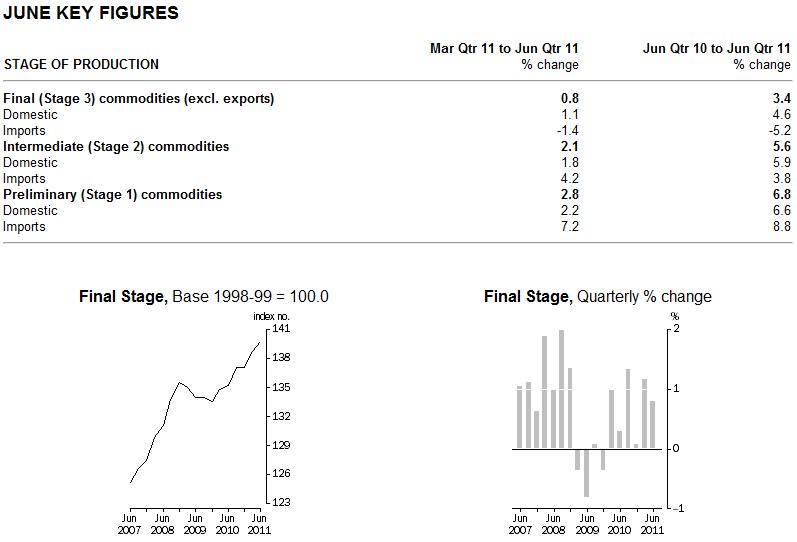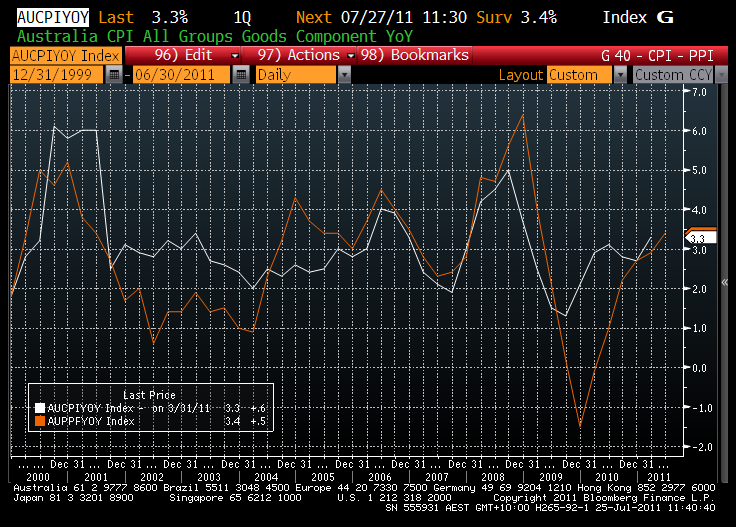
JUNE KEY POINTS
FINAL (STAGE 3) COMMODITIES
- increased by 0.8% in the June quarter 2011.
- mainly due to rises in the prices received for building construction (+1.2%), petroleum refining (+10.3%) and other agriculture (+7.9%).
- partly offset by falls in the prices received for industrial machinery and equipment manufacturing (-2.0%).
- increased by 3.4% through the year to June quarter 2011.
INTERMEDIATE (STAGE 2) COMMODITIES
- increased by 2.1% in the June quarter 2011.
- mainly due to rises in the prices received for oil and gas extraction (+15.0%), petroleum refining (+6.9%) and grain, sheep, beef and dairy cattle farming (+4.9%).
- partly offset by falls in the prices received for basic non-ferrous metal manufacturing (-2.7%).
- increased by 5.6% through the year to June quarter 2011.
PRELIMINARY (STAGE 1) COMMODITIES
- increased by 2.8% in the June quarter 2011.
- mainly due to rises in the prices received for oil and gas extraction (+15.0%), petroleum refining (+6.8%) and iron and steel manufacturing (+6.1%).
- partly offset by falls in the prices received for basic non-ferrous metal manufacturing (-2.7%).
- increased by 6.8% through the year to June quarter 2011.
The ABS released its Producer Price Index this morning and the headline number eased from 1.2% in the March quarter to .8% in the three months to June. I’m surprised, given the oil price remained strong throughout, and you can see the inflationary effects of this across the index categories.
The offsetting effect appears to be coming from the strong dollar, which caused a big drop in import prices.
So, what does this tell us about the CPI figure later in the week? Here is a chart of the PPI graphed against the CPI for the last decade or so:

As you can see, historically the PPI tends to lead the CPI up and follow it down, which makes perfect sense. That relationship inverted in the last cycle, probably because manufacturers were hit so hard following the GFC, which left a legacy of considerable production overcapacity just about everywhere (and no pricing power).
Anyway, you can also see, the easing of the past quarter was not enough to knock the price off the rising trend so I don’t see a lot of let up in this survey for the CPI.

